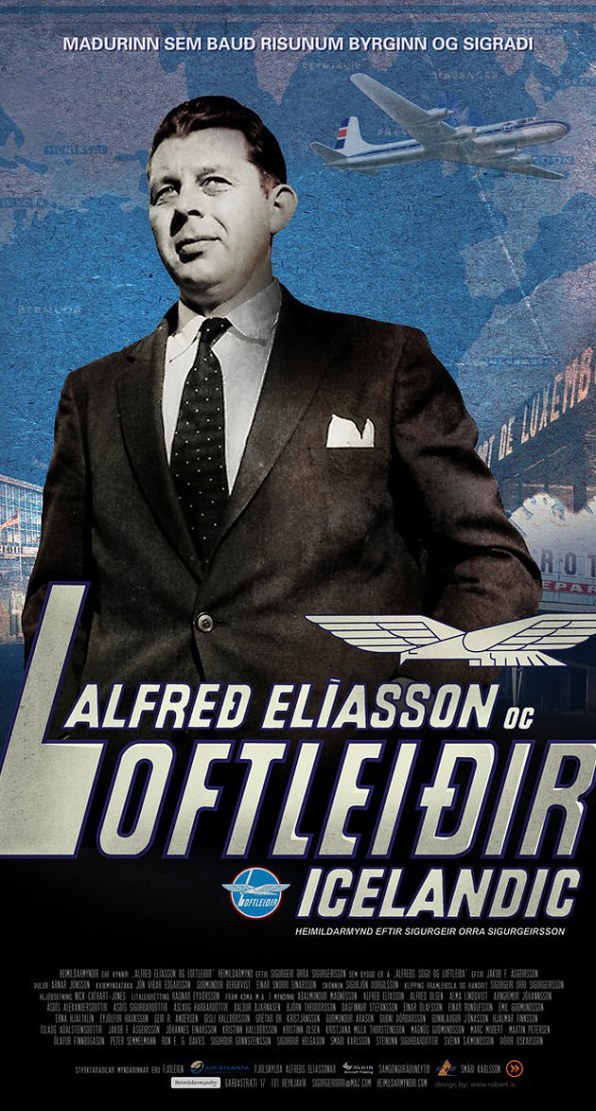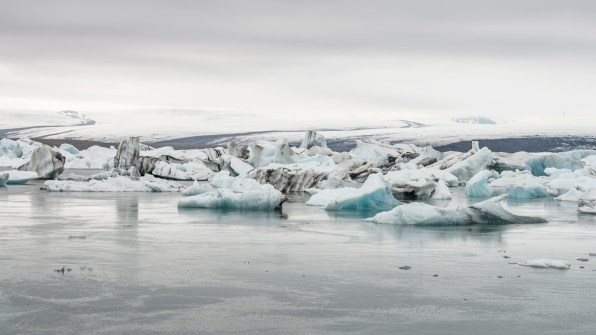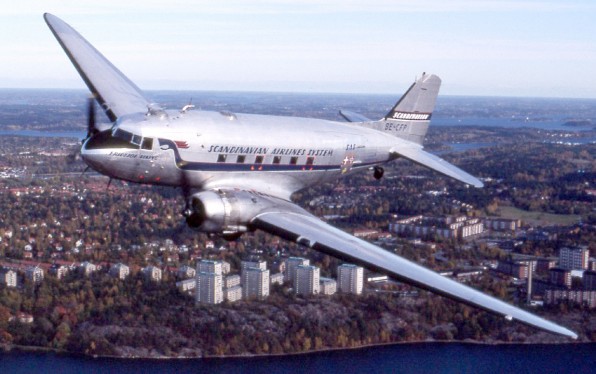A Plane Crash, A Glacier, And An Entrepreneur: How Icelandair Opened Up Air Travel For Everyone
In the winter of 1951, Alfred Eliasson’s company, Icelandic Airlines, was about to go under. The founder and his executive team had decided to pull out of the transatlantic market just a few months prior, after established carriers like Pan-Am proved to be tougher competition than expected. Low domestic demand in Iceland, a country of just 200,000 inhabitants at the time, also proved to be a challenge. By December of 1950, the airline known as Loftleiðir in Icelandic had only one scheduled route. It was between the capital city of Reykjavik and a small group of islands off Iceland’s east coast.

That year, most of the company’s revenue came from odd jobs that Eliasson scraped together. He spotted schools of fish from the sky for local fisherman and shipped cargo for local businesses. By New Year’s it appeared the six-year-old airline would have to fold.
But Eliasson refused to give up. He was a fiercely ambitious man on a mission that ended up changing the face of the airline industry. Through force of will, he and his cofounders invented the budget transatlantic flight and opened up Iceland to the rest of the world. His efforts laid the groundwork for Iceland to transform itself from one of Europe’s poorest nations to the most developed nation on earth by 2008.
But first he had to dig an aircraft out of a hole–or rather, a glacier.
In September of 1950, an Icelandic Airlines plane carrying cargo back from Luxembourg went down over the Vatnajökull glacier, in the southeast of the island. A U.S. Air Force (USAF) rescue team flew to the crash site, landed on the ice, and found the Icelandic Airlines plane severely damaged, but all crew were alive. When they tried to take off, the engines of the USAF’s DC-3 plane failed due to the frigid temperature. The rescue team had no choice but to depart on foot and leave the plane behind. Assuming that the aircraft would get buried in snow, the Americans wrote it off as a loss.

The following spring, Eliasson made a deal with the USAF and bought the salvage rights of the downed DC-3 for $600. He led a small team of Icelandic Airlines employees to Vatnajökull to dig the plane out. The winter had been particularly harsh, and when they arrived, only the rudder was visible. Eliasson and his group spent the next month shoveling snow, eventually leasing a bulldozer to drag the plane to an airstrip 60 miles away. The batteries and engine worked, so they flew back to Reykjavik, where they registered the plane under Icelandic Airlines’ name and christened it Jökull, the Icelandic word for glacier.
In its day, the DC-3 plane was a war horse, a near indestructible tank for the sky. During World War II, it was the only cargo plane to register an aerial kill. The story goes that a kamikaze Japanese plane tried to take one down by flying into it. The DC-3 lost most of its left wing but soldiered on, while the Japanese plane went down into the ocean.
However hardy, Eliasson’s recovered aircraft required considerable repairs, and in the fall of 1951, it was commercially retrofitted in England. During the trip to the U.K., the Icelanders received an unexpected offer: The Spanish airline Iberia offered $75,000 to purchase the DC-3. The papers were signed within days.

Over the course of a year, Eliasson had saved his company and in the process earned a nice return. With cash and a killer founding story, his puddle-jumping days were behind him. So he set his sights on something much bigger.
If there was a holy grail in the 20th-century airline business, the transatlantic market was it. Americans and Europeans had been eyeing the route ever since Charles Lindbergh flew nonstop from New York to Paris in 1927 and opened the public’s eyes to the possibilities of international air travel. That flight marked the beginning of a race to convert millions of seafaring travelers into airline customers. But while early aviation races–to be first to put a plane in the air or fly a group of passengers–were led and won by inventors, the later contests were dominated by bureaucrats. The challenges of air travel transitioned from breaking physical barriers to breaking governmental ones. And no man was more influential in the aviation bureaucracy than a British man named Sir William Hildred.
In 1951, Hildred was promoted to director-general of the International Air Transport Association (IATA), the organization founded after World War II to regulate the nascent international airline industry. According to Josh Dunson, author of Freedom in the Air, Hildred was “always a firm believer in the need for regulation and controls.” Much of his philosophy was formed during World War I. As an infantry man for the British army, he saw the destructive potential of airplanes. He was determined to make the skies a safe place. According to him, “The open skies failed and must always fail–they would be deadly.”
During his first years as director-general of the IATA, Hildred had succeeded in regulating the world’s 200 airlines. He organized meetings between airline executives and state officials, and by 1952, there were thousands of bilateral agreements between governments and airlines. The IATA regulated everything from prices to timetables, which earned it a reputation as one of the most powerful cartels in the world. One of the international laws it introduced restricted airlines to flights to or from their country of registry.
At a board meeting in 1952, Eliasson and Icelandic Airlines’s chairman Sigurdur Olafsson decided to challenge that law by launching a flight from New York to Luxembourg that was $100 cheaper than the prices set by Hildred’s group. Ad copy read, “Icelandic to Europe. For people who do a lot of saving.” Icelandic was nicknamed the “hippie airline” because its flights were the starting point for Americans who embarked on the famous Hippie Trail through Europe and Asia.
The move was a bold one–and entirely legal. Between New York and Luxembourg, Eliasson introduced a one-hour layover in Iceland. Technically passengers were buying two flights: one between New York and Iceland, and another between Iceland and Luxembourg. Luxembourg didn’t have an international airline, so it couldn’t be penalized by the IATA.
By dodging regulations, Icelandic Airlines (later renamed Icelandair) was able to set its own prices and position itself as the world’s first low-cost carrier at a time when international travel was reserved for the wealthy. Within a decade, Icelandic was flying middle-class families across the Atlantic in droves. With an incentive to lower prices, Eliasson and his team found creative ways to cut costs–including flying older planes, a strategy used by many budget carriers today–and attracted more customers.
Icelandic became one of the fastest growing companies in the industry. By 1953, 5,000 passengers flew Icelandic per year. By 1960, that number spiked to 40,000. And by 1970, the airline was flying 71,500 passengers and generating $23.5 million in annual revenue. That’s the equivalent of $145 million today–an impressive number for a country with a population of 200,000 back then.
By the time the airline industry was deregulated in the 1980s, other entrepreneurs followed Eliasson’s model, launching low-cost carriers like Laker Airways, and in the 1990s, Southwest and Ryanair.
Eliasson, who died in 1988, is one of those entrepreneurs that history likes to forget. His face was never featured on the cover of Time magazine and he didn’t win any prestigious accolades. It wasn’t until 2009 that Icelandic filmmakers told his story in the little-known documentary Alfred Eliasson & Loftleiðir Icelandic.
For hundreds of years, Iceland sat isolated in the Atlantic Ocean, but Eliasson’s airline helped the country jump to the top of the United Nations’ Development Index in 2007. To borrow words from Edda Helgason, the daughter of Icelandair’s first chairman, the company opened Europe to Americans, and America to Europeans, with Iceland located perfectly in between.
In 1952, Alfred Eliasson, the scrappy CEO of Icelandic Airlines, came up with an idea to boost his company’s performance. The solution transformed Eliasson’s country—and the world.
In the winter of 1951, Alfred Eliasson’s company, Icelandic Airlines, was about to go under. The founder and his executive team had decided to pull out of the transatlantic market just a few months prior, after established carriers like Pan-Am proved to be tougher competition than expected. Low domestic demand in Iceland, a country of just 200,000 inhabitants at the time, also proved to be a challenge. By December of 1950, the airline known as Loftleiðir in Icelandic had only one scheduled route. It was between the capital city of Reykjavik and a small group of islands off Iceland’s east coast.
Fast Company , Read Full Story
(74)










